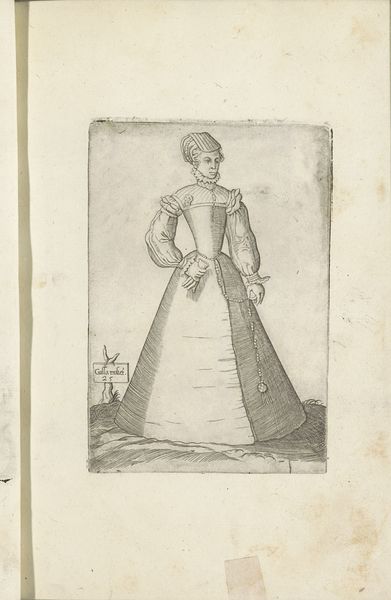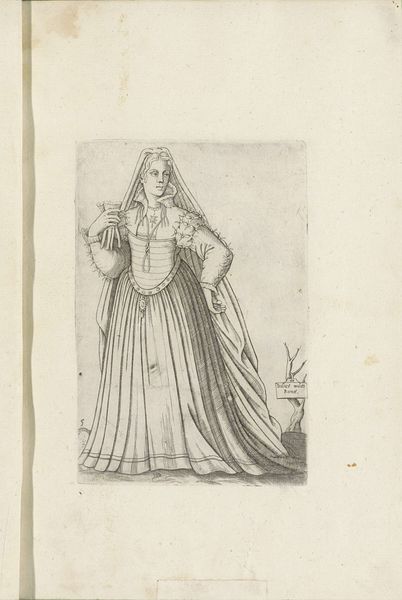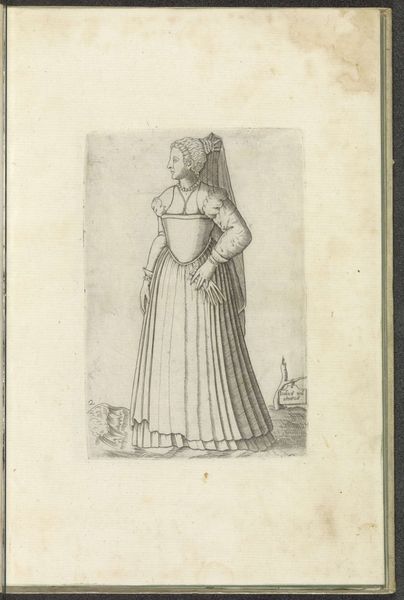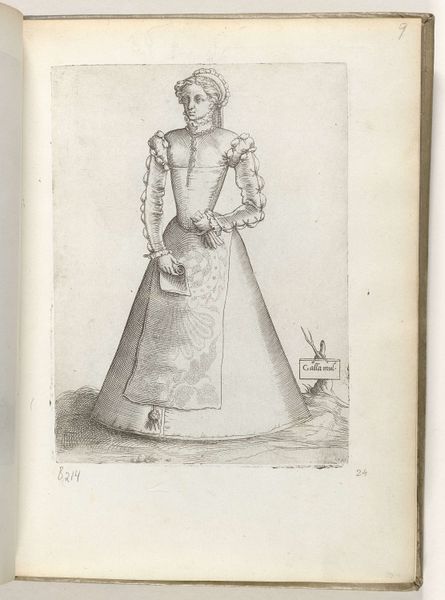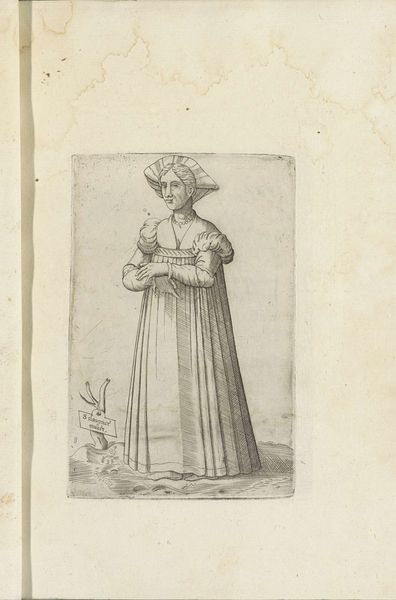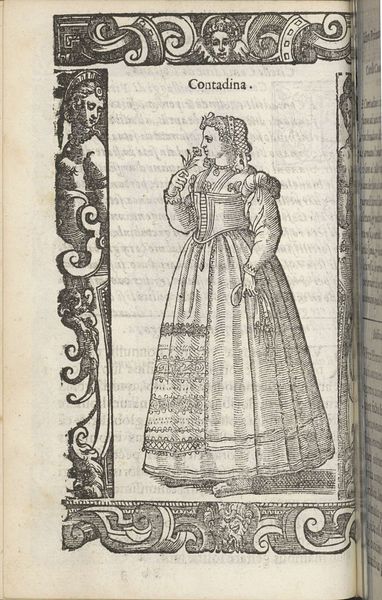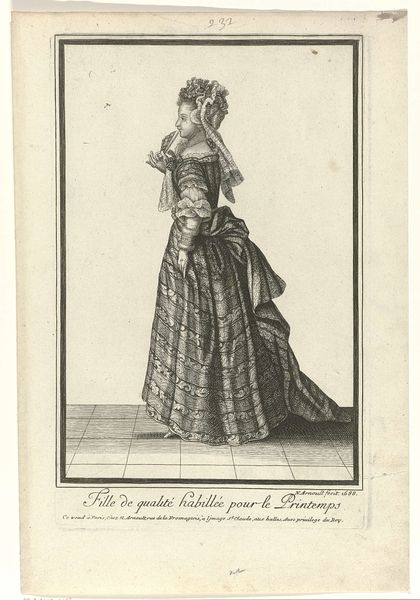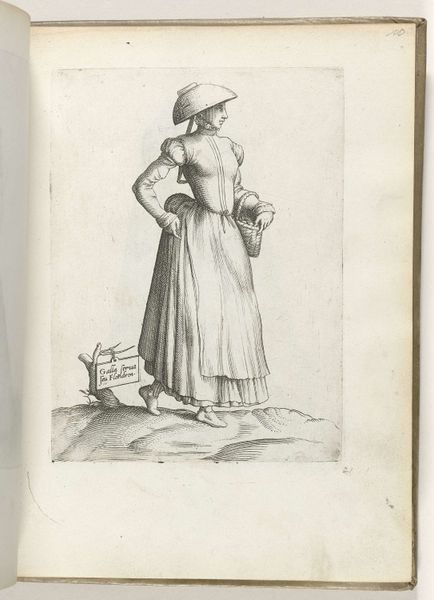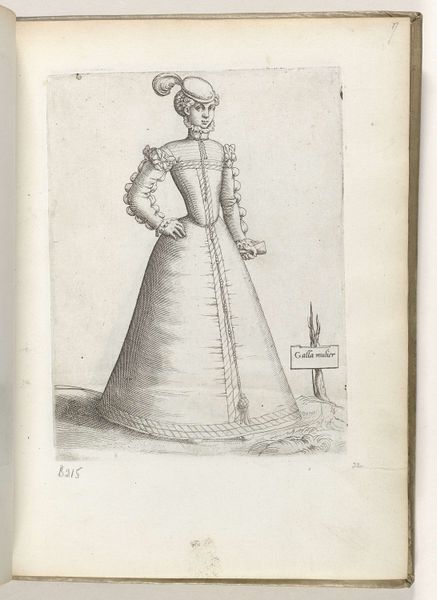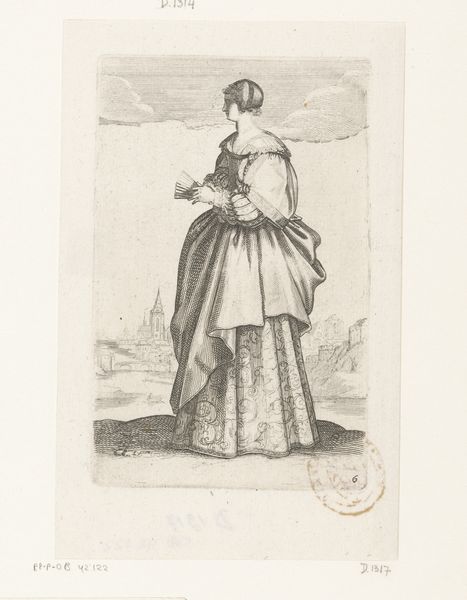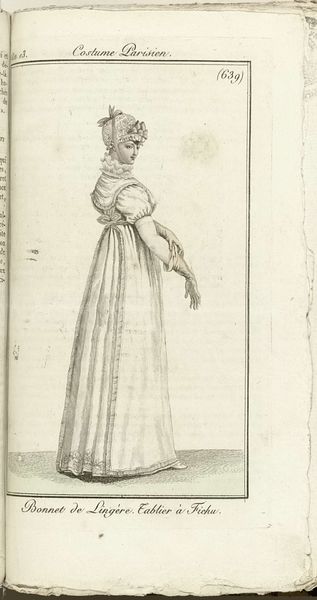
drawing, print, engraving
#
portrait
#
drawing
#
aged paper
#
toned paper
#
light pencil work
# print
#
pencil sketch
#
sketch book
#
mannerism
#
figuration
#
11_renaissance
#
personal sketchbook
#
sketchbook drawing
#
pencil work
#
storyboard and sketchbook work
#
sketchbook art
#
engraving
Dimensions: height 265 mm, width 195 mm, height 150 mm, width 105 mm
Copyright: Rijks Museum: Open Domain
Curator: This sketch possesses a curious formality, wouldn’t you agree? Such deliberate linearity. Editor: Yes, quite reserved, almost stoic. The tones of the aged paper lend an air of solemnity to the piece, as well. I find it intriguing that such an intimate-feeling sketch possesses that character. Curator: We're looking at a print from 1569, "Een getrouwde vrouw uit Frankrijk," or "A Married Woman from France," attributed to Ferando Bertelli and held in the Rijksmuseum collection. Its Mannerist style displays a delicate, almost fragile construction through line work. The balance is peculiar; how the costume directs the composition to widen towards the bottom, anchoring the portrait. Editor: The rendering of the costume is certainly striking. The artist really captures the weight and texture with what appears to be such light pencil work. Tell me, what does the inclusion of such an elaborate presentation contribute? Is this fashion as power? Curator: Indeed. It’s interesting to consider what Bertelli aimed to convey beyond mere representation. Was he seeking to capture a sense of ideal femininity of the French elite at that moment? The pose certainly is staged and, more generally, fashion during that period spoke volumes about one's status, wealth, and allegiances. Her attire almost certainly communicates information regarding her standing in society, and this sketch is a valuable insight into Renaissance visual culture and social status. The details of her clothing – the ruffs, the cut of the gown – become encoded signifiers. Editor: You've made it hard not to consider the cultural weight of garments and status in this depiction! Curator: Exactly. These elements coalesce into a visual language reflecting identity and, in its turn, contribute a voice into ongoing cultural dialogues. Editor: Ultimately, Bertelli's hand seems intent on distilling a moment of French identity. Curator: Yes. This close examination of line and form reveals intricate historical codes as a kind of map for that time and its ideals of representation.
Comments
No comments
Be the first to comment and join the conversation on the ultimate creative platform.
